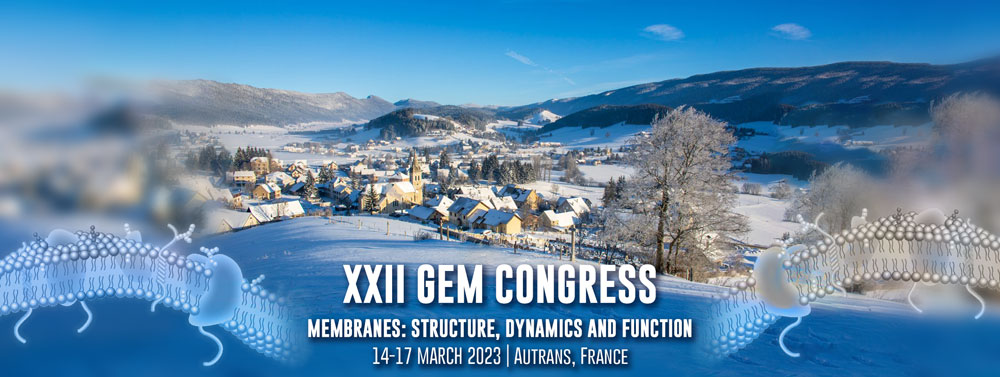Speaker
Description
Membrane proteins reside at interfaces between aqueous and lipid media and solving their molecular structure relies most of the time on removing them from the membrane using detergent. Luckily, this solubilization process does not strip them from all the associated lipids and single-particle cryo-transmission electron microscopy (SP-TEM) has proved a very good tool to visualize both protein high-resolution structure and, often, many of its associated lipids. Observation of membrane protein structures from the Protein DataBank and their associated maps in the Electron Microscopy DataBase showed that many SP-TEM maps allow lipid visualization. We describe the type of binding sites, the influence of symmetry, resolution and other factors. We illustrate lipid visualization around and inside the protein core, show that some lipid bilayers in the core can be shifted with respect to the membrane and how some proteins can actively bend the lipid bilayer that binds to them (Figure 1). We conclude that resolution improvement in SP-TEM will likely enable many more discoveries regarding the role and the identification of lipids bound to proteins.
| Session | Structural biology |
|---|

